 W
WJapanese general election of 1890 was the Empire of Japan’s first general election for members of the House of Representatives of the Diet of Japan. It was the first example of a popularly elected national assembly in Asia.
 W
WThe Japanese General Election of 1892 was the Empire of Japan’s second general election for members of the House of Representatives of the Diet of Japan, held on February 15, 1892.
 W
WGeneral elections were held in Japan in March 1898.
 W
WGeneral elections were held in Japan on 31 March 1937. Rikken Minseitō emerged as the largest in Parliament, with 179 of the 466 seats. The election was a major victory for the Shakai Taishūtō, which became the third-largest party in the Diet. It was the first socialist party to do so in Japanese history. In contrast, the mildly pro-military Rikken Minseitō lost several seats and fascist groups such as Tōhōkai remained minor forces in the House. A month after the election, the Emperor replaced Hayashi with Fumimaro Konoe. Voter turnout was 73.3%.
 W
WThe 21st General Election of Japan of the House of Representatives took place in Japan on April 30, 1942. It was the only election in Japan during the Pacific theater of World War II. At this time, the lower house no longer had any significant executive and legislative power, and power had increasingly gone to the military dictatorship since the "Manchurian Incident", the invasion of Manchuria by the Imperial Army without regard to the cabinet in 1931. Since 1932 when Admiral Viscount Saitō Makoto was appointed prime minister with the first so-called "national unity cabinet", few members of the political parties in the House of Representatives had any significant role in government.
 W
WCensorship in the Empire of Japan was a continuation of a long tradition beginning in the feudal period of Japan. Government censorship of the press existed in Japan during the Edo period, as the Tokugawa bakufu was in many ways a police state, which sought to control the spread of information, including Christianity, the influx of Western ideas, pornography and any political writings critical of the shōgun and government.
 W
WThe Freedom and People's Rights Movement, Liberty and Civil Right Movement, or Free Civil Right Movement was a Japanese political and social movement for democracy in the 1880s. It pursued the formation of an elected legislature, revision of the Unequal Treaties with the United States and European countries, the institution of civil rights, and the reduction of centralized taxation. The Movement prompted the Meiji government to establish a constitution in 1889 and a diet in 1890; on the other hand, it failed to loosen the control of the central government and its demand for true democracy remained unfulfilled, with ultimate power continuing to reside in the Meiji (Chōshū–Satsuma) oligarchy because, among other limitations, under the Meiji Constitution, the first election law enfranchised only men who paid a substantial amount in property taxes, as a result of the Land Tax Reform in 1873.
 W
WGenrō (元老) was an unofficial designation given to certain retired elder Japanese statesmen, considered the "founding fathers" of modern Japan, who served as informal extraconstitutional advisors to the emperor, during the Meiji, Taishō, and Shōwa periods in Japanese history.
 W
WChamber of Elders was a national assembly in early Meiji Japan, established after the Osaka Conference of 1875. It is also referred to as the Senate of Japan, Genrōin being the word used to describe the Roman Senate, and other western legislatures named after it.
 W
WThe Dark/Black Ocean Society was an influential Pan-Asianist group and secret society active in the Empire of Japan, and was considered to be an ultranationalist group by GHQ in the International Military Tribunal for the Far East.
 W
WImperial Conference was an extraconstitutional conference on foreign matters of grave national importance that was convened by the government of the Empire of Japan in the presence of the Emperor.
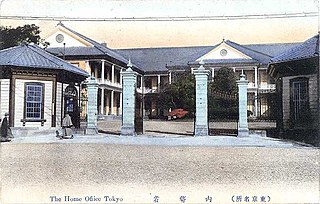 W
WThe Home Ministry was a Cabinet-level ministry established under the Meiji Constitution that managed the internal affairs of Empire of Japan from 1873 to 1947. Its duties included local administration, police, public works and elections, and monitoring people. This Ministry changed its name to Ministry of Internal Affairs and Communications after Supreme Commander for the Allied Powers restoration in 1945.
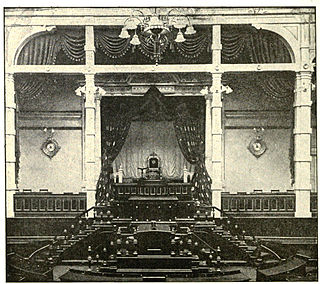 W
WThe House of Peers was the upper house of the Imperial Diet as mandated under the Constitution of the Empire of Japan.
 W
WThe Kōdōha or Imperial Way Faction (皇道派) was a political faction in the Imperial Japanese Army active in the 1920s and 1930s. The Kōdōha sought to establish a military government that promoted totalitarian, militaristic and aggressive expansionistic ideals, and was largely supported by junior officers. The radical Kōdōha rivaled the moderate Tōseiha for influence in the army until the February 26 Incident in 1936, when it was de facto dissolved and many supporters were disciplined or executed.
 W
WThe Japan Labour-Farmer Party was a socialist political party in Japan between December 1926 and December 1928. During its existence, it occupied a centrist position in the divided socialist movement.
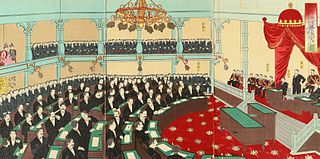 W
WThe Kazoku was the hereditary peerage of the Empire of Japan, which existed between 1869 and 1947. They succeeded the feudal lords (daimyo) and court nobles (kuge), but were abolished with the 1947 constitution.
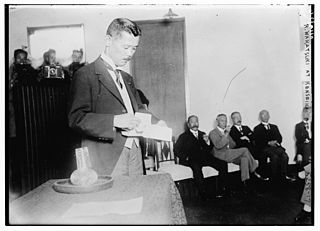 W
WThe Kenseikai was a short-lived political party in the pre-war Empire of Japan.
 W
WThe National Foundation Society was a nationalist political society in late 1920s and early 1930s Japan.
 W
WKokutai is a concept in the Japanese language translatable as "system of government", "sovereignty", "national identity, essence and character", "national polity; body politic; national entity; basis for the Emperor's sovereignty; Japanese constitution". The word is also a short form of the (unrelated) name for the National Sports Festival of Japan.
 W
WThe Labour-Farmer Party was a political party in the Empire of Japan. It represented the left-wing sector of the legal proletarian movement at the time. Oyama Ikuo was the chairman of the party. At the time the party was banned by the government in 1928, it was estimated to have around 90,000 members in 131 local organizations. The party was supported by the Hyōgikai trade union federation and the Japan Peasant Union.
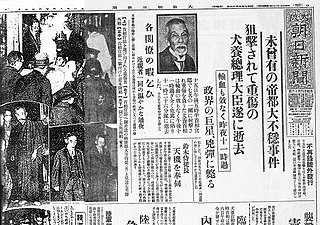 W
WThe May 15 Incident was an attempted coup d'état in the Empire of Japan, on May 15, 1932, launched by reactionary elements of the Imperial Japanese Navy, aided by cadets in the Imperial Japanese Army and civilian remnants of the ultra nationalist League of Blood. Prime Minister Inukai Tsuyoshi was assassinated by 11 young naval officers. The following trial and popular support of the Japanese population led to extremely light sentences for the assassins, strengthening the rising power of Japanese militarism and weakening democracy and the rule of law in the Empire of Japan.
 W
WThe Constitution of the Empire of Japan, known informally as the Meiji Constitution, was the constitution of the Empire of Japan which was proclaimed on February 11, 1889, and remained in force between November 29, 1890 and May 2, 1947. Enacted after the Meiji Restoration in 1868, it provided for a form of mixed constitutional and absolute monarchy, based jointly on the Prussian and British models. In theory, the Emperor of Japan was the supreme leader, and the Cabinet, whose Prime Minister would be elected by a Privy Council, were his followers; in practice, the Emperor was head of state but the Prime Minister was the actual head of government. Under the Meiji Constitution, the Prime Minister and his Cabinet were not necessarily chosen from the elected members of the group.
 W
WThe Ministry of Agriculture and Commerce or Trade was a cabinet-level ministry in the government of the Empire of Japan from 1881-1925. It was briefly recreated as the Ministry of Agriculture and Commerce during World War II
 W
WThe Ministry of Communications was a Cabinet-level ministry in the Empire of Japan. Its modern successors include the Ministry of Internal Affairs and Communications, Japan Post and Nippon Telegraph and Telephone
 W
WThe Ministry of Greater East Asia was a cabinet-level ministry in the government of the Empire of Japan from 1942 to 1945, established to administer overseas territories obtained by Japan in the Pacific War and to coordinate the establishment and development of the Greater East Asia Co-Prosperity Sphere.
 W
WThe Ministry of Munitions was a cabinet-level ministry in the final days of the Empire of Japan, charged with the procurement and manufacture of armaments, spare parts and munitions to support the Japanese war effort in World War II.
 W
WThe Army Ministry , also known as the Ministry of War, was the cabinet-level ministry in the Empire of Japan charged with the administrative affairs of the Imperial Japanese Army (IJA). It existed from 1872 to 1945.
 W
WThe Navy Ministry was a cabinet-level ministry in the Empire of Japan charged with the administrative affairs of the Imperial Japanese Navy (IJN). It existed from 1872 to 1945.
 W
WNational Mobilization Law was legislated in the Diet of Japan by Prime Minister Fumimaro Konoe on 24 March 1938 to put the national economy of the Empire of Japan on war-time footing after the start of the Second Sino-Japanese War.
 W
WThe Ōtsu incident was a failed assassination attempt on Nicholas Alexandrovich, Tsesarevich of Russia on 11 May [O.S. 29 April] 1891, during his visit to Japan as part of his eastern journey.
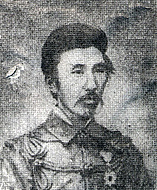 W
WThe Ōura Scandal of 1915 was one of several spectacular political scandals of late Meiji and Taishō periods in Japanese history.
 W
WThe Public Security Preservation Laws, commonly referred to as the Peace Preservation Laws, were a series of laws enacted from 1894 to 1925 during the Empire of Japan. Collectively, the laws were designed to suppress political dissent on the left.
 W
WThe Police System of the Empire of Japan comprised numerous police services, in many cases with overlapping jurisdictions.
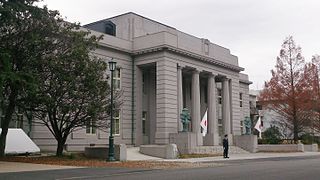 W
WThe Privy Council of Japan was an advisory council to the Emperor of Japan that operated from 1888 to 1947. It was largely used to limit the power of the Imperial Diet.
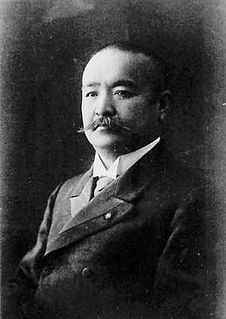 W
WThe Rikken-Dōshi Kai was a political party active in the Empire of Japan in the early years of the 20th century. It was also known as simply the Dōshikai.
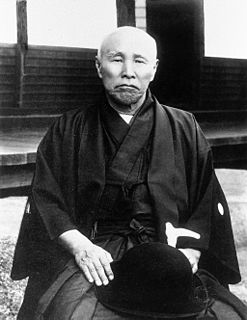 W
WThe Rikken Kaishintō was a political party in Empire of Japan. It was also known as simply the Kaishintō.
 W
WThe Rikken Kokumintō was a minor political party in the Empire of Japan. It was also known as simply the Kokumintō.
 W
WRikken Minseitō was one of the main political parties in pre-war Empire of Japan. It was commonly known as the 'Minseitō'.
 W
WThe Rikken Seiyūkai was one of the main political parties in the pre-war Empire of Japan. It was also known simply as the "Seiyūkai".
 W
WThe Rikken Teiseitō was a short-lived conservative political party in the Meiji period Empire of Japan. It was also known as simply the Teiseitō.
 W
WSakurakai, or Cherry Blossom Society was an ultranationalist secret society established by young officers within the Imperial Japanese Army in September 1930, with the goal of reorganizing the state along totalitarian militaristic lines, via a military coup d'état if necessary. Their avowed goal was a Shōwa Restoration, which they claimed would restore the Emperor Hirohito to his rightful place, free of party politics and evil bureaucrats in a new military dictatorship.
 W
WThe Shakai Taishūtō was a moderate leftist political party in early Shōwa period Empire of Japan.
 W
WThe Siemens Scandal of January 1914 involved collusion between several high-ranking members of the Imperial Japanese Navy, the British company Vickers and the German industrial conglomerate of Siemens AG. It was one of several spectacular political scandals of late Meiji and Taishō period Japanese politics, leading to the fall of the cabinet of Yamamoto Gonnohyoe.
 W
WSocialist thought in Imperial Japan appeared during the Meiji period (1868–1912) with the development of numerous relatively short-lived political parties through the early Shōwa period. Left wing parties, whether advocating socialism, Marxism or agrarianism, provoked hostility from the mainstream political parties, oligarchs and military alike, and many were either banned or went underground soon after formation. Although occasionally winning a seat in the lower house of the Diet of Japan, left-socialist parties played little role in the government of the Empire of Japan.
 W
WThe Supreme Court of Judicature was the highest judicial body in the Empire of Japan. It existed from 1875 to 1947.
 W
WThe Taishō political crisis was a period of political upheaval in Japan that occurred after the death of the Meiji Emperor in 1912. During the twelve-month period following the emperor's death, the Japanese government was led by three different prime ministers as the government attempted to restore the balance between the influence of Japan's elder statesmen and that of the Japanese public, as embodied in the Meiji Constitution.
 W
WTōhōkai was a Japanese fascist political party in Japan, active in the 1930s and early 1940s. Its origins lay in the right-wing political organization Kokumin Domei which was formed by Adachi Kenzō in 1933 and which advocated Nazism. In 1936, Nakano Seigō disagreed with Adachi of matters of policy and formed a separate group, which he called the 'Tōhōkai'.
 W
WThe Tokubetsu Kōtō Keisatsu , also the Tokkō , was established in 1911, for the high policing, investigation, and control of political groups and ideologies deemed to threaten the public order of the Empire of Japan. As the civilian counterpart to the military police forces of the Kenpeitai (army) and of the Tokkeitai (navy), the Tokkō's functions were criminal investigation and counter-espionage. The Tokubetsu Kōtō Keisatsu was also known as the Peace Police and as the Thought Police .
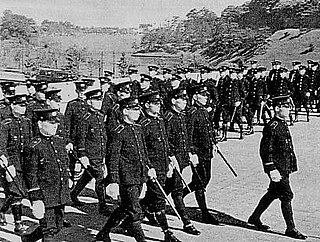 W
WThe Emergency Service Unit was a rapid reaction force of the Tokyo Metropolitan Police Department (TMPD) in the pre-World War II era. This unit were interpreted as a Japanese counterpart of the New York City Police Department Emergency Service Unit.
 W
WThe Tōseiha or Control Faction (統制派) was a political faction in the Imperial Japanese Army active in the 1920s and 1930s. The Tōseiha was a grouping of moderate officers united primarily by their opposition to the radical Kōdōha faction and its aggressive expansionistic and anti-modernization ideals. The Tōseiha rivaled the Kōdōha for influence in the army until the February 26 Incident in 1936, when the Kōdōha was de facto dissolved and many supporters were disciplined or executed. The Tōseiha became the primary influence in the army, but the Kōdōha ideology and its supporters continued to influence Japanese militarism into the late 1930s.